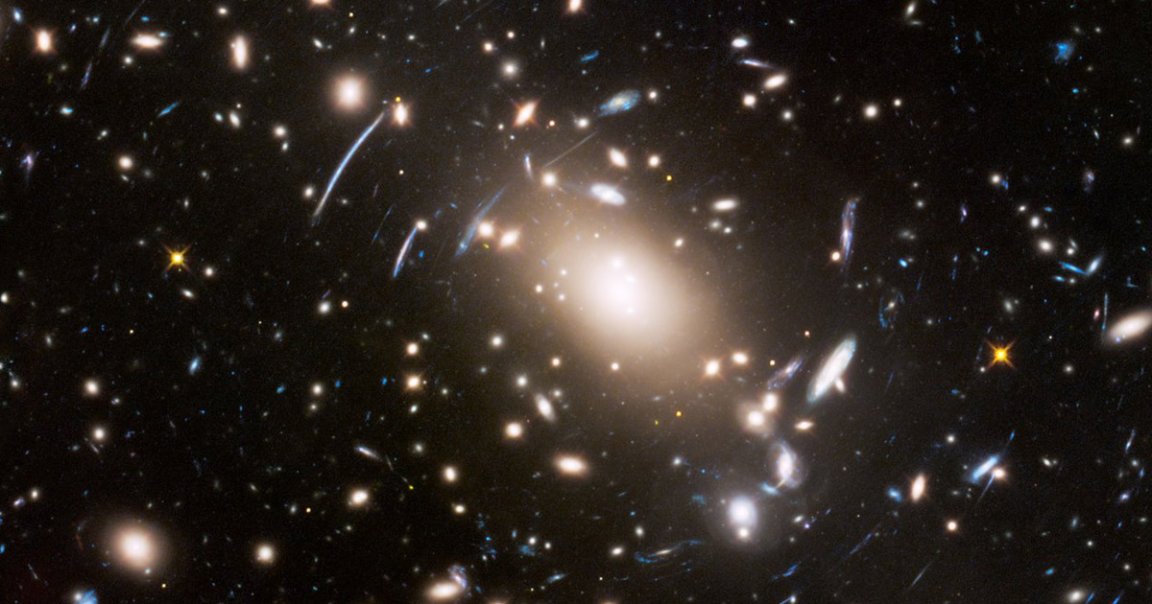
According to new research, dark matter may be an even bigger mystery than previously believed.
The stuff is thought to make up a significant percentage of the mass of the universe — yet it’s near impossible to study, let alone observe.
Physicists have had to resort to studying the way dark matter bends light between distant sources such as a galaxy and the observer, an effect called “gravitational lensing.” The higher the concentration of dark matter, the more pronounced the effect.
But when a team of European researchers looked at data from the Hubble Space Telescope and the Southern Observatory’s Very Large Telescope, they found that the gravitational lensing effect around massive structures called “galaxy clusters” was ten times as strong as predicted by simulations.
“We have done a lot of testing of the data in this study, and we are sure that this mismatch indicates that some physical ingredient is missing either from the simulations or from our understanding of the nature of dark matter,” said Massimo Meneghetti, of the INAF-Observatory of Astrophysics and Space Science of Bologna in Italy and lead author of a paper about the research published today in the journal Science, in an ESA statement.
In other words — we’re missing a key ingredient.
“One possible origin for this discrepancy is that we may be missing some key physics in the simulations,” Meneghetti said in a NASA statement.
To conduct their research, Meneghetti’s team produced a “dark-matter map” using observations from of a sample of three massive galaxy clusters.
They discovered something unexpected: smaller-scale images nested within larger lens distortions in each galaxy cluster’s core. In other words, the gravitational lensing effect was significant, leading them to believe they had stumbled upon dense concentrations of dark matter.
The discrepancy highlights just how little we know about the mysterious stuff that appears to make up most of the known universe.
READ MORE: Dark matter might be even stranger than we thought, according to Hubble [Digital Trends]
More on dark matter: Astronomers Discover Deep-Space “Structure,” 1.4 Billion Light Years Across